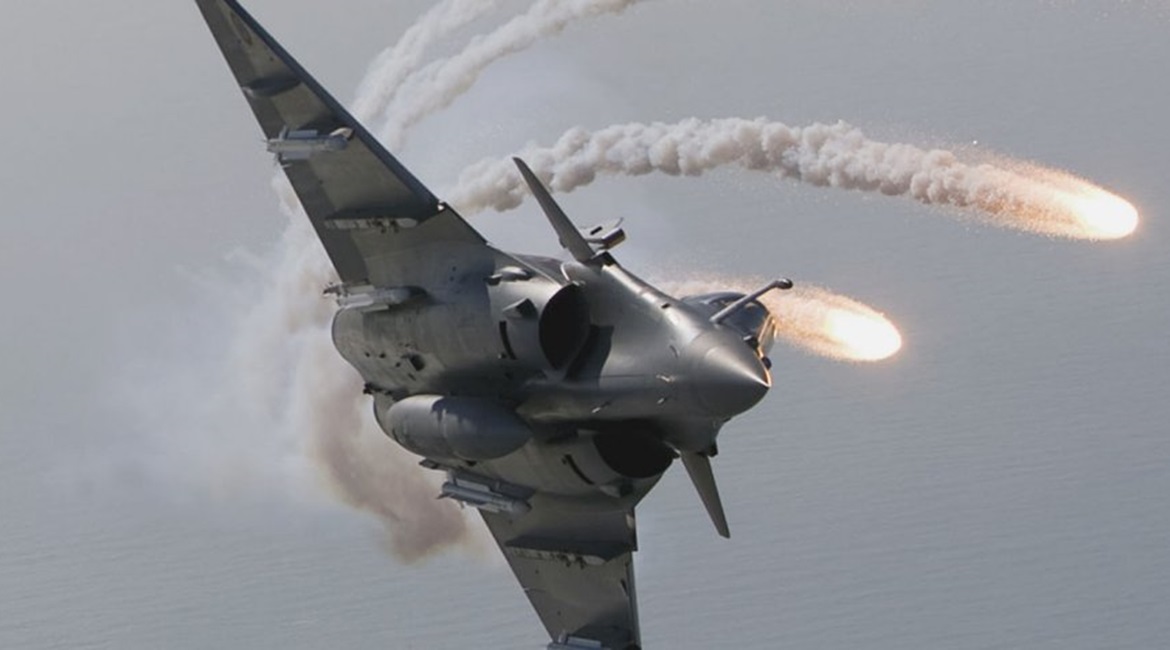
Dassault’s Rafale F4 multirole combat aircraft is to include an upgraded version of a Thales/MBDA Rafale Fire-Control Radar Protection and Avoidance System (Système de Protection et d‘Évitement des Conduites de Tir du Rafale: SPECTRA) self-protection suite.
SPECTRA is designed to protect the aircraft against radar frequency (RF) and infrared (IR) threats, principally those from radars, and RF/IR-guided air-to-air/surface-to-air missiles (SAMs/AAMs). The ensemble comprises laser, missile, and radar warning receivers, together with a jammer and a chaff/flare dispenser. These are controlled by an electronic warfare management system.
Thales and MBDA have released few details regarding the SPECTRA’s RF performance but it is thought to encompass a 2 GHz to 20 GHz waveband. Some sources have stated that this waveband could be as wide as 2 GHz to 40 GHz.
In February the French government awarded Dassault a contract to develop the Rafale F4. In March 2017 the French government authorised development of the F4 configuration, and the first such aircraft is expected to be qualified in 2023, according to Dassault.

The SPECTRA self-protection system is to equip the Rafale as part of the forthcoming F4 initiative. This could enhance the system’s capabilities regarding MMW radars. (MBDA)
Few details have been released regarding the upgrades to SPECTRA under the F4 initiative. There has been speculation that the RF detection frequencies it covers may have increased, possibly detecting RF threats in the Millimetre Wave (MMW) band.
MMW frequencies typically stretch from 30 GHz to 300 GHz, and MMW radars are increasingly attractive for military applications. As the appellation suggests, MMW transmissions have very short wavelengths. For example, frequencies of 50 GHz have wavelengths of 5.99 mm. This allows the generation of highly detailed target imagery, albeit at the expense of range.
Looking to read the full article?
Gain unlimited access to Janes news and more...






